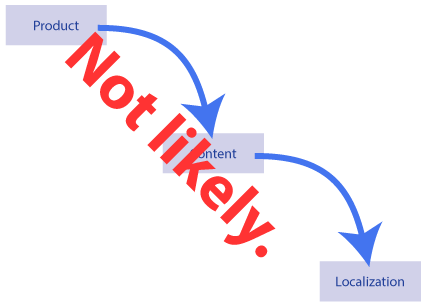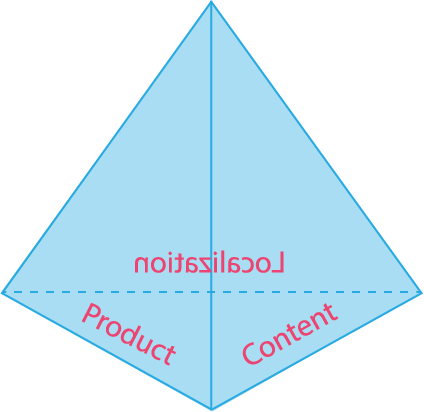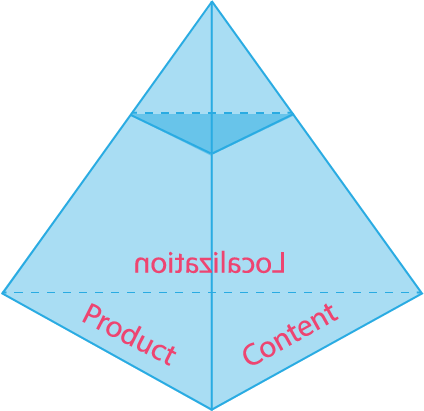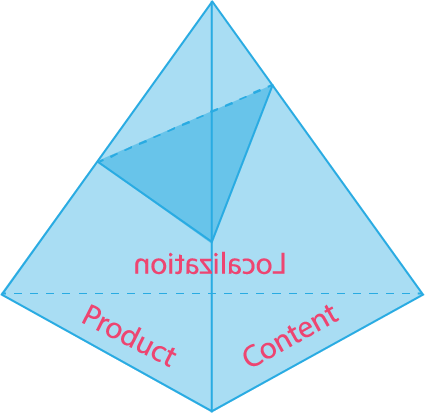Waterfall content development? You’re doing it wrong.
Product development, content development, and localization processes are too often viewed as a waterfall process.
This is not at all accurate.

Waterfall. As if.
Product development decisions do feed into content and content into localization, but, in the other direction, localization decisions also drive product development. For example:
- Every time you add a new locale, you need to make sure that your product can support the local language, regulations, currency, and so on. Regulatory requirements might drive product decisions—the European Union, for example, has strict requirements around personal data protection.
- In a country with multiple official languages (like Switzerland or Canada), you may need to provide a way to switch a product interface from one language to another.
- If you want to deliver content as part of the product, you need to make sure that your product has enough storage space available for product content.
- If you want to deliver web-based content with periodic updates, how do you handle the connection from the product to the content?
- What if you want to have troubleshooting instructions that use product information directly? How do you integrate the instructions with the product status? How do you do that in 57 different languages?
This leads me to the unified theory for development:
Product, content, and localization maturity are interdependent. A mature process in one area requires alignment with mature processes in other areas.
Instead of waterfall, think of content, localization, and product as sides of a pyramid.

Content, product, and localization all contribute to the overall development process.
Your development process is a slice across the pyramid that intersects all of the faces.

If your processes are equally mature, development works well.
What you want is a horizontal slice—the development process in sync across all of the faces. If the processes are out of alignment and do not have similar levels of maturity, you end up with an unstable platform that is impossible to stand on. Problems on the lower (less mature) side will cause instability everywhere.

Different levels of process maturity make for an unstable development platform.
Here’s are some examples of misaligned processes:
- Localization needs to deliver languages that the product didn’t account for. Suddenly, you have a need for Thai characters, and no way to embed them in the software.
- Product is cloud-based software that is updated weekly. Content development process can only provide PDF that is updated every six months.
- Product ships with all languages enabled, but localization process requires another eight months to provide content in all languages.
- Content development process is frenetic and unpredictable. Localization costs skyrocket because of lack of style guides, consistent terminology, and formatting templates.
When we develop content and localization strategies, we must assess the maturity of the product development process. The right content strategy may require the organization to make changes in product development and vice versa. Product, content, and localization strategies all need to be aligned at similar levels of maturity.



Larry Kunz
This is great, Sarah. Anyone can draw pyramids and say that processes need to be aligned. But you also provided concrete, real-life examples of why that’s true. You’ve shown why the content strategist needs to have influence over all areas of the business, and why the content strategist needs to have executive-level support.
Sarah O'Keefe
Thanks, Larry! Actually, it turns out that not just anyone can draw pyramids–I had to get some help from Gretyl to build these.
But with that said, I think a narrow focus on “how do we make content awesome?” needs to be preceded by more strategic assessments.